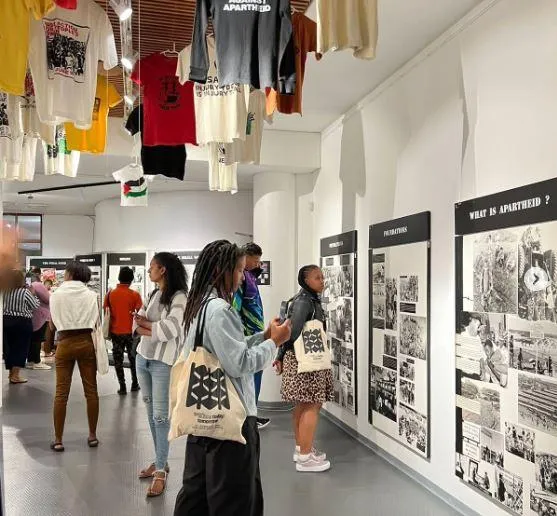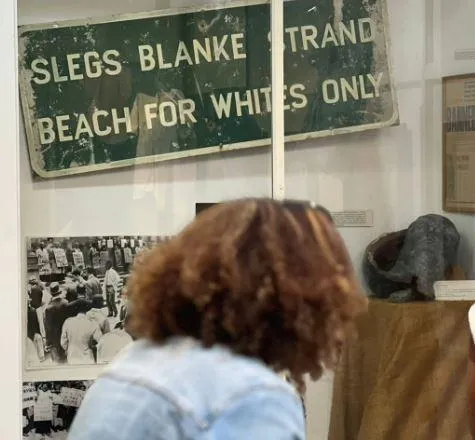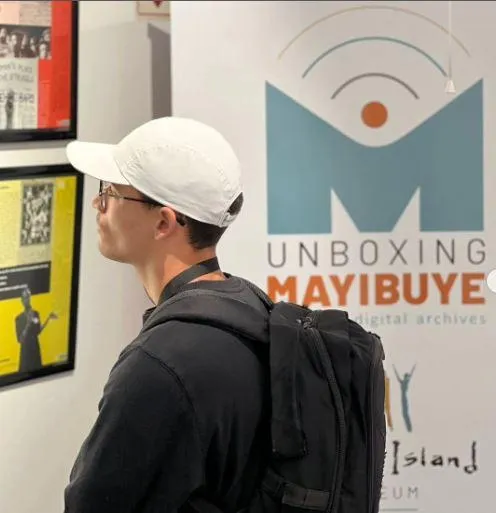
The Unboxing Mayibuye has become like a walk through South African history
Image: Instagram
Preserving South Africa’s liberation history is a gift to future generations. This according to David Martinon, Ambassador of France to South Africa, at the closing event of the Unboxing Mayibuye project on 8 May 2025.
The event, held at the Nelson Mandela Gateway in Cape Town’s V&A Waterfront, marked the successful conclusion of the Unboxing Mayibuye Project—a collaboration between the Robben Island Museum (RIM), the French National Audiovisual Institute (INA), and the Agence Française de Développement (AFD). This initiative aimed to digitally preserve South Africa’s liberation history and make it accessible to future generations.
Robben Island, symbolising the struggle against apartheid, houses the Mayibuye Archives at the University of the Western Cape (UWC). These archives hold crucial collections documenting resistance to apartheid, both within South Africa and globally, spanning from 1948 to 1994.

The three year project was hosted at Robben Island Museum
Image: Instagram
The successful completion of the project was a significant milestone for UWC. Professor Shaun Pather, advisor to the Rector and Vice-Chancellor at UWC, explained: “This project has been about more than preserving artefacts. It has been about memory and justice, and making sure that the stories of struggle remain accessible and meaningful into the future.”
In his keynote address, Professor Pather highlighted the project’s impact on future generations: “When youth engage with heritage, they become active participants in democracy, co-creating knowledge for the future. Our struggle for freedom wasn’t just a national effort—it was global, and the Unboxing Mayibuye Project allows us to share that story with the world.”
Pather went on to emphasise the importance of making South Africa's liberation history accessible in new, innovative ways: “Our archives are not just national treasures; they are part of the collective memory of the world. Through this project, we’ve made sure that the legacy of our struggle is not locked away but is available for all, everywhere.”

Every part of the exhibition held a special purpose
Image: Instagram
The project also showcased how academic institutions like UWC can link heritage, technology, and social justice. By leveraging digital tools, such as augmented reality, it ensured South Africa’s liberation history reached a global audience, making it accessible to people worldwide.
Over the past three years, RIM and INA worked to enhance the archives’ digital preservation efforts, training six young assistants in preservation, documentation, and digitisation. A key outcome of the project was the creation of a website showcasing collections such as the International Defence and Aid Fund (IDAF) and the Apple Box Archives.
The IDAF supported anti-apartheid activists, while the Apple Box Archives feature items donated by former Robben Island prisoners after their release in 1991. Many prisoners carried their belongings in apple boxes, which became a powerful symbol of their struggle.
Professor Saths Cooper, Chairperson of the Robben Island Museum, highlighted how the project had made these historical treasures more accessible. “This is a significant development, allowing us all, especially our children, to access the contributions made by those who fought for our freedom.”
Echoing South Africa’s G20 presidency theme of “Solidarity, Equality, Sustainability,” Professor Pather emphasised the project’s role in engaging young people with history: “When youth engage with heritage, they become active participants in democracy, co-creating knowledge for the future.”
